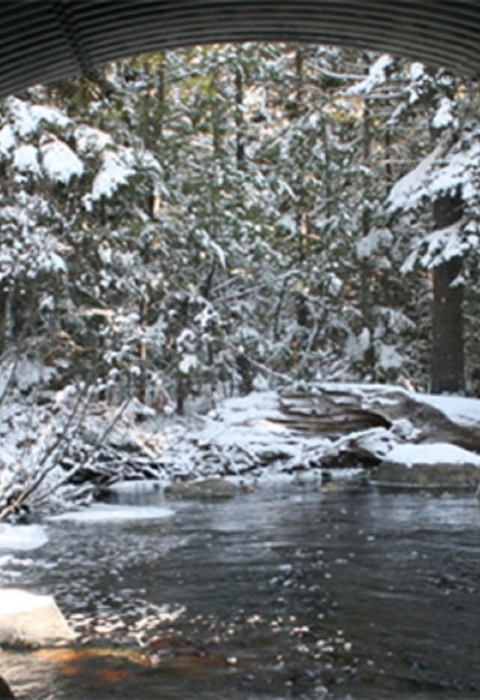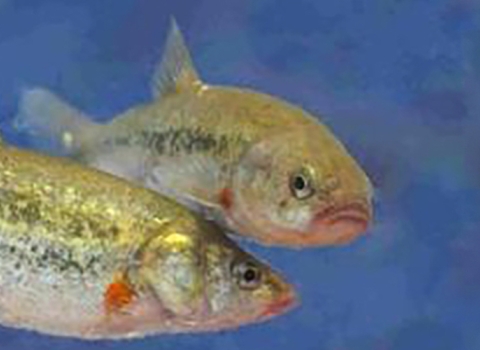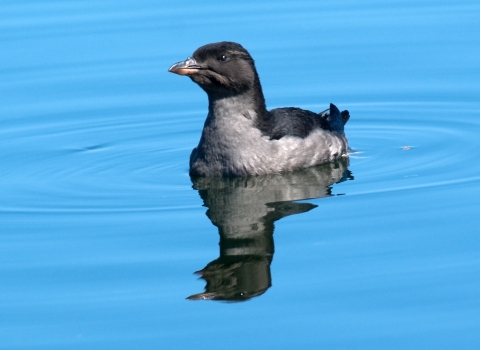DETROIT — The U.S. Fish and Wildlife Service today announced the availability of up to $36 million through President Biden’s Investing in America agenda for fish passage fish passage
Fish passage is the ability of fish or other aquatic species to move freely throughout their life to find food, reproduce, and complete their natural migration cycles. Millions of barriers to fish passage across the country are fragmenting habitat and leading to species declines. The U.S. Fish and Wildlife Service's National Fish Passage Program is working to reconnect watersheds to benefit both wildlife and people.
Learn more about fish passage projects across the nation that address outdated, unsafe or obsolete dams, culverts, levees and other barriers fragmenting our nation’s rivers and streams. Since 2022, the Bipartisan Infrastructure Law Bipartisan Infrastructure Law
The Bipartisan Infrastructure Law (BIL) is a once-in-a-generation investment in the nation’s infrastructure and economic competitiveness. We were directly appropriated $455 million over five years in BIL funds for programs related to the President’s America the Beautiful initiative.
Learn more about Bipartisan Infrastructure Law has invested $73 million in 79 projects through the Service’s National Fish Passage Program. These funds are investing in our nation’s infrastructure and natural resources by reconnecting fragmented rivers, improving fish migration, and enhancing local economies.
An inter-agency task force is supporting an efficient and collaborative approach to investing a total of $2 billion in fish passage projects under the Bipartisan Infrastructure Law across the Departments of the Interior, Transportation, Agriculture, and Commerce. These projects and funding opportunities are available at the recently updated Fish Passage Portal.
“Waterways have been reconnected, fish migration is improved, and local economies have been stimulated through the President’s Bipartisan Infrastructure Law,” said Service Director Martha Williams. “With $36 million in additional investments in fish passage projects, communities will benefit from dam removals, culvert replacements, and reduced flooding. The Service will continue to work with Tribes, state and local agencies, non-governmental organizations and conservation partners to reconnect important aquatic systems.”
The National Fish Passage Program, facilitated by the Service’s Fish and Aquatic Conservation Program, will prioritize projects that will:
- Maximize benefits to priority species and habitats.
- Provide sustainable fish passage.
- Leverage regional or watershed priorities for habitat restoration, fish passage or aquatic connectivity.
- Enhance community resilience to climate change climate change
Climate change includes both global warming driven by human-induced emissions of greenhouse gases and the resulting large-scale shifts in weather patterns. Though there have been previous periods of climatic change, since the mid-20th century humans have had an unprecedented impact on Earth's climate system and caused change on a global scale.
Learn more about climate change , address public safety hazards and provide other benefits such as job creation or recreational fishing opportunities. - Support or engage with disadvantaged communities.
- Coordinate on species and watershed priorities with Tribes and states.
- Be supported by partners, affected stakeholders, and the local community.
The National Fish Passage Program has decades of proven experience implementing infrastructure projects with partners on a voluntary basis to improve the health of the nation’s waterways, reconnect rivers, improve climate resilience and enhance local economies. The program provides financial, technical and planning assistance to Tribes, communities, other agencies and landowners to help remove barriers and restore rivers for the benefit of fish and people. It also advances President Biden’s America the Beautiful Initiative, a decade-long challenge to pursue a locally led and voluntary, nationwide effort to conserve, connect, and restore our nation’s lands, waters, habitats and wildlife.
Since 1999, the program has worked with over 2,000 local communities, states, Tribes and private landowners to remove or bypass 3,500 barriers to fish passage and has reopened access to over 64,000 miles of upstream habitat and over 193,000 acres of wetland for fish and wildlife species.
Interested parties should submit a Letter of Interest to the appropriate National Fish Passage Program regional coordinator, via email, by Nov.17, 2023. Letters of Interest should include the project name and location, a brief description of the project objectives and benefits, the expected requested funding amount, and a statement of interest in applying for the funding opportunity. More information, including a list of National Fish Passage regional coordinators, may be found at Grants.Gov or by visiting the National Fish Passage Program’s informational website.
-FWS-
The U.S. Fish and Wildlife Service works with others to conserve, protect and enhance fish, wildlife, plants and their habitats for the continuing benefit of the American people. For more information, visit www.fws.gov and connect with us on social media: Facebook, Instagram, \X (formerly known as Twitter), LinkedIn, Flickr and YouTube.



